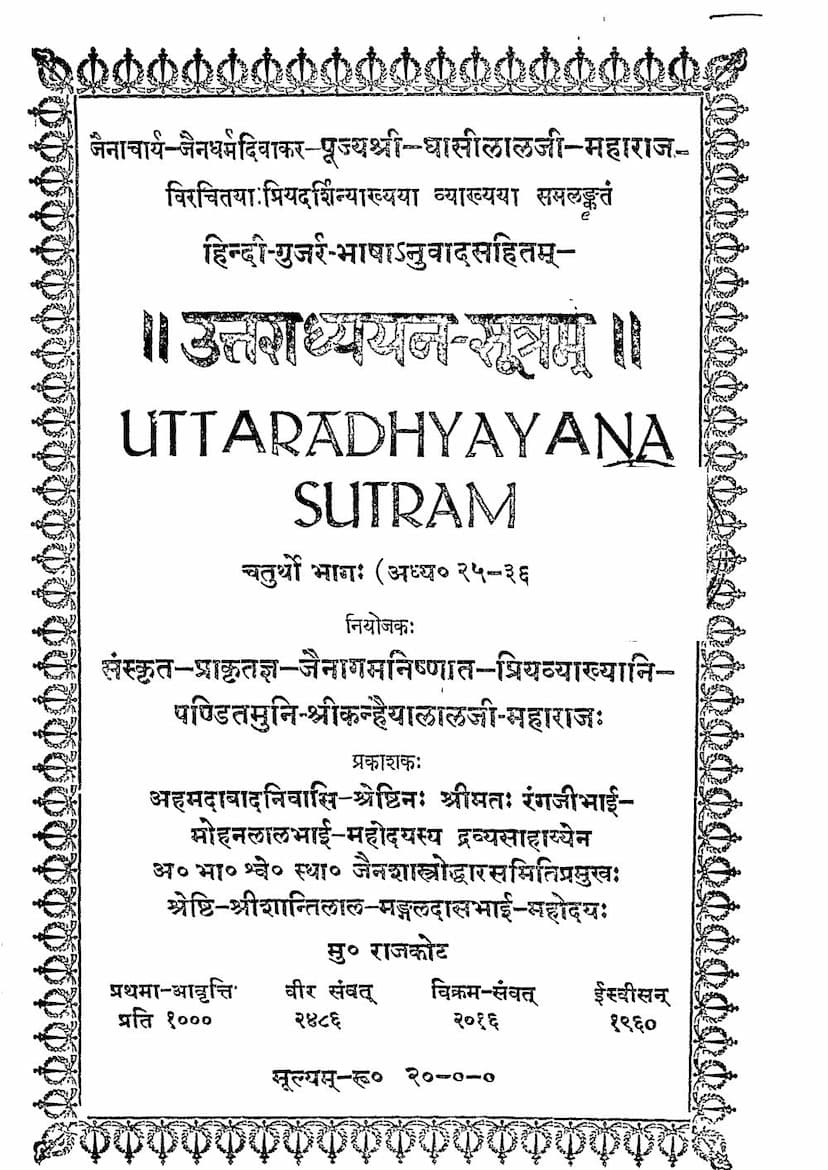Uttaradhyayan Sutram Part 04
Added to library: September 2, 2025

Summary
I cannot access external websites or specific files, including the catalog link you provided. Therefore, I cannot provide a summary of the Jain text "Uttaradhyayan Sutram Part 04" by Ghasilal Maharaj based on the link.
However, based on the general understanding of the Uttaradhyayan Sutra and Jain philosophy, I can offer a summary of what such a text would likely contain, focusing on the themes and teachings typically found in the Uttaradhyayan Sutra:
The Uttaradhyayan Sutra is one of the principal texts of the Jain Agamas, revered by the Shwetambar sect. It is a collection of discourses attributed to Lord Mahavir, covering a wide range of ethical, philosophical, and practical aspects of Jainism.
Part 04, covering chapters 25-36, would likely delve into advanced teachings and practical applications of Jain principles, potentially including:
- Ethical Conduct (Sheel & Samyam): Further elaboration on the principles of conduct, self-control, and the avoidance of harmful actions. This might involve detailed discussions on the vows and their nuances.
- Spiritual Practices (Tapas & Dhyan): Likely to explore various forms of austerities (tapas) and meditation (dhyan) as crucial tools for purification of the soul and progress on the path to liberation. This could include descriptions of different types of tapas, their benefits, and the mental states cultivated during meditation.
- The Nature of Reality (Tattva Bodha): Deeper philosophical discussions on the Jain understanding of reality, including the nature of soul (jiva), non-soul (ajiva), karma, liberation (moksha), and the cycle of birth and death (samsara). This might involve detailed explanations of the soul's journey and the obstacles it encounters.
- The Path to Liberation (Moksha Marga): A focus on the practical steps and disciplines required to achieve liberation from the cycle of rebirth. This would likely emphasize the importance of right faith (samyak darshan), right knowledge (samyak jnan), and right conduct (samyak charitra) as the three jewels leading to moksha.
- The Role of Virtues (Gunas): Discussions on various virtues like patience, forgiveness, non-violence, truthfulness, etc., and how their cultivation leads to spiritual progress.
- The Dangers of Attachment and Defilement: Likely to highlight the negative consequences of attachment to worldly pleasures, sensual desires, and the accumulation of karma, emphasizing their role as hindrances to spiritual advancement.
- The Importance of Asceticism: A strong emphasis on the ascetic path, including the disciplines required for monks and nuns, and the ultimate goal of renunciation for spiritual purity.
- The Nature of Karma: Further insights into the workings of karma, its binding nature, and the methods to shed it through ethical living and spiritual practices.
- The Final Goal: Moksha: The ultimate aim of Jainism, liberation from suffering and the cycle of rebirth, would be a central theme, describing the state of the liberated soul.
The specific chapters (25-36) might focus on particular virtues, vices, or philosophical concepts, often illustrated through narratives or dialogues to make the teachings relatable and impactful. Without the content of the text itself, this is a general overview of the likely subject matter.